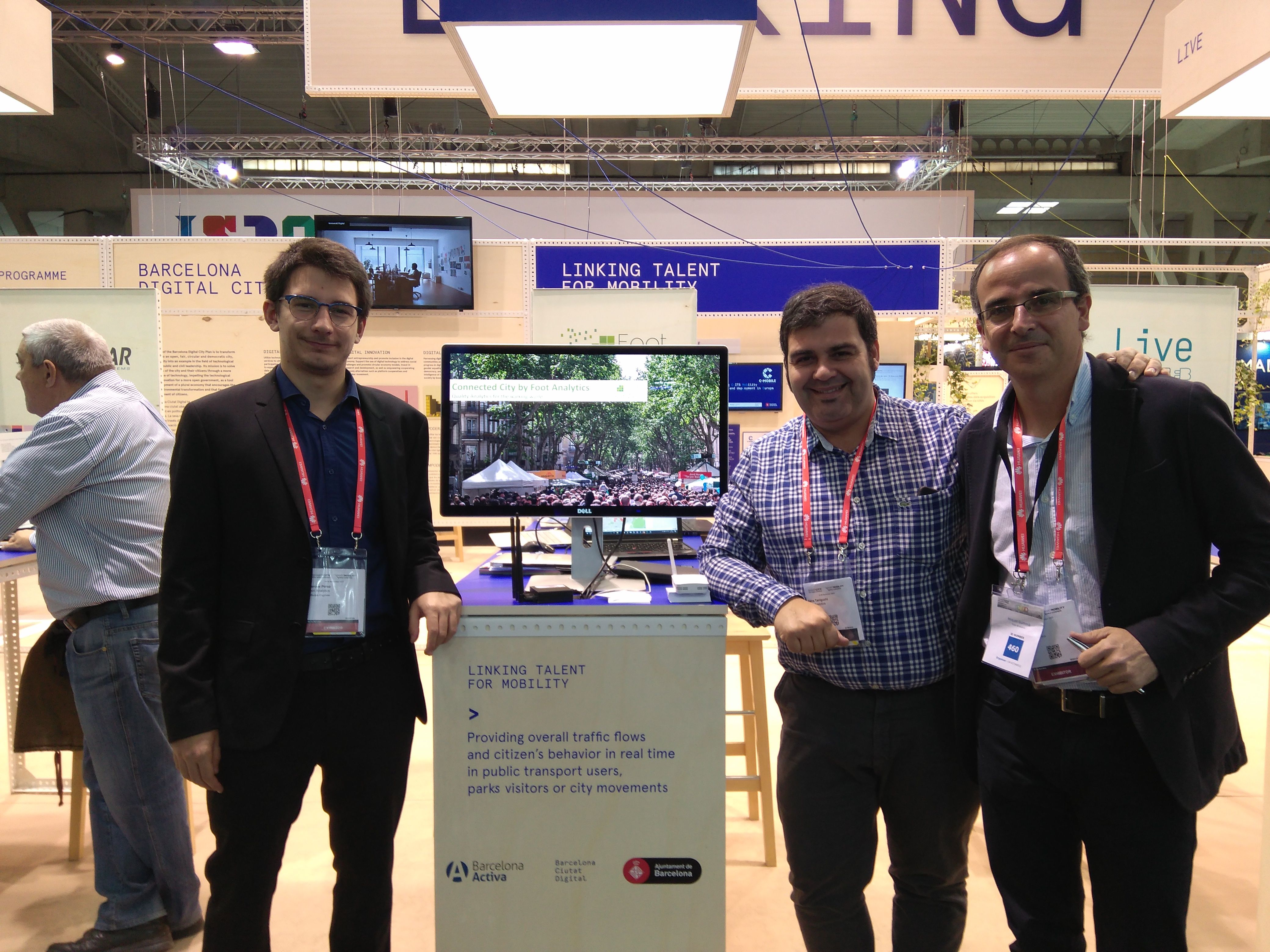
“An online store knows how many people visit the site, if a person came in two days ago or eight, the last time someone visited the website, how long they spent looking at a page... And using all these data, companies can improve their online offer,” says Miquel Gummà, CEO of Foot Analytics. Yet, getting this information for a physical shop in the street is not so easy. Foot Analytics was set up with “the aim of providing the physical world the same knowledge and analytical power as online stores,” points out the entrepreneur, who adds that “we want to bring all this analysis to shops in the street, in other words, like Google Analytics for the physical world.”
But how can all of this information be gathered by a shop? Using sensors installed in the shops, Foot Analytics detects the wifi signals given off by smartphones and with the information gathered can work out the comings and goings of people in a specific place. “We have frequency data but we can also trace users, in other words, we not only get the data of the people who go to a shop at a particular moment, but we also learn that the person visited today, or yesterday, and how long they spent in the shop,” says Gummà. Moreover, with the data gathered by the sensors a shop can know if the people who visit the store are new customers or repeat customers.
Solutions for smart cities
Retail is the first sector that Foot Analytics has focused on. Nevertheless, after two years on the market, the startup is starting to offer solutions to smart cities. Thus, at the recent Smart City Expo World Congress (SCEWC) Foot Analytics presented the three solutions it offers to cities: for parks, municipal markets and public transport.
"We want to provide the physical world with the same data and analytics that online stores have"
In the case of parks, “thanks to our data we can know how many people use the park, who are tourists and who are residents, which gates they came through and which they used to leave, what are the most popular points of interest in the parks... And all of this can be used by the park’s management to improve signposting, services or maintenance of the park (safety, cleaning...), among other things,” says Gummà.
As for municipal markets, Foot Analytics is already working with the Sant Antoni market, the Llibertat market and the Sant Cugat market. The aim is to dynamise local retail through the local and municipal markets, to attract new customers and grow the loyalty of those they have with real-time metrics on the influence of publicity activities in these places, for example.
The third solution presented at the Smart City Expo is for buses. It is already known how many people use public transport from a particular stop, but what is not known easily is which stop they get off at. With the data from Foot Analytics, this problem is easier to resolve, thanks to more exact metrics on the use of public transport. So, buses can learn about the routes people take and optimise the lines to offer a better service. What’s more, the startup’s metrics offer data about a particular bus line for certain days of the week, or hours in a day. The company is now doing a trial in this sector with the Moventia company.
More than 1,000 sensors in operation
The Foot Analytics project began four years ago and their solutions have been on the market for two years. Today they have more than 1,000 sensors in operation, with some 80% of them in retail. The company is working with brands like Seat, Nostrum and Viena, and with SMEs in the fashion and footwear sectors.
The startup, which offers its clients a quota model per service, ended 2016 with a turnover of 202,000 euros. Yet, the company is preparing an important international expansion plan, with the aim of having some 10,000 sensors operational by the end of 2019.
The startup has more than 1,000 sensors in operation and ended 2016 with a turnover of 202,000 euros
Foot Analytics, located in the Barcelona Activa technology park, is self-funded by its founders and has also raised 200,000 euros in a private funding round and another 200,000 euros through a Enisa and ICF loan. “In all, between private capital, loans and subsidies, we have got together 750,000 euros that, along with the revenue that comes directly from our clients, has allowed us to keep operating during these years,” says the entrepreneur. Nevertheless, Foot Analytics is looking for a new round so as to expand the team and begin to open a new market outside Spain.